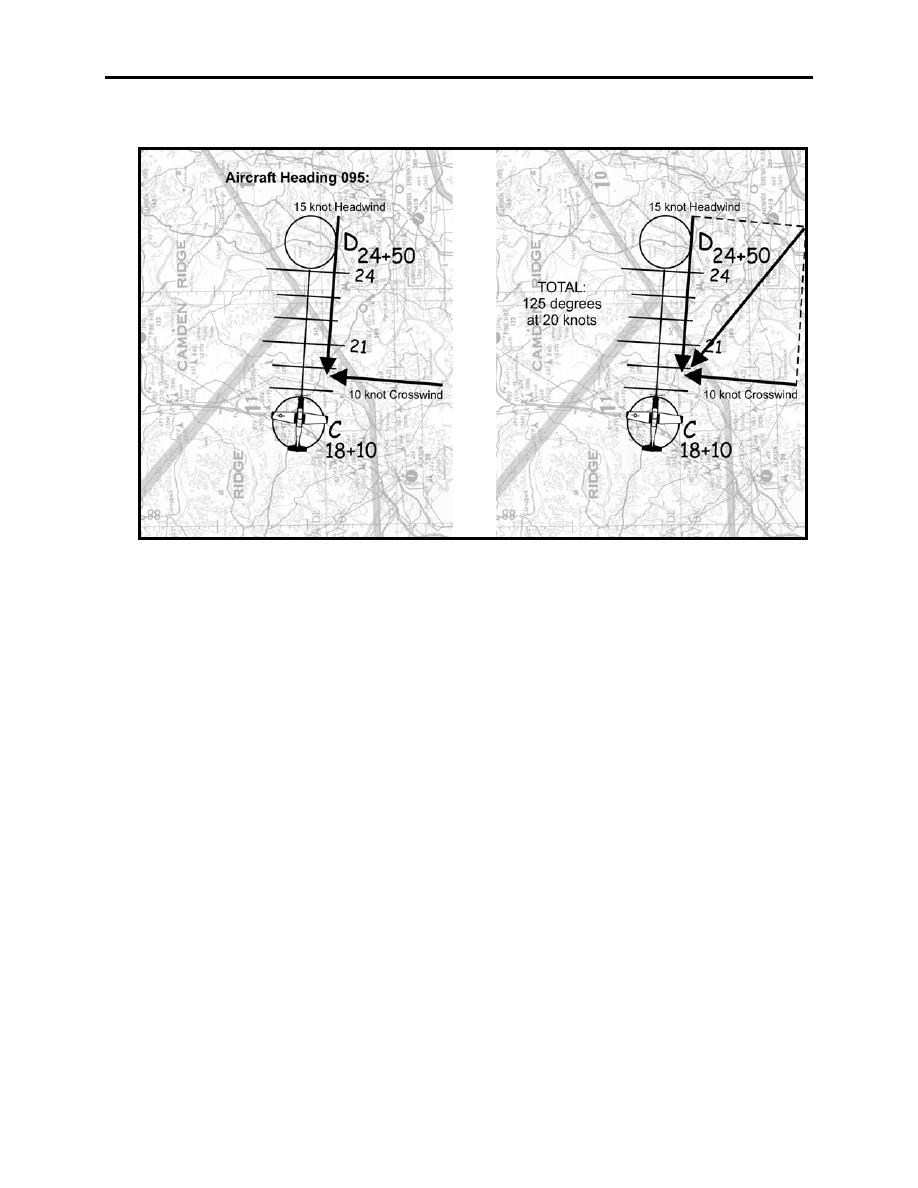 |
|||
|
|
|||
|
|
|||
| ||||||||||
|
|  CHAPTER FIVE
T-6A NAVIGATION
Figure 5-11 Vectors
510. TOTAL WIND COMPUTATION
Once you have the wind components, you can combine them to determine total wind. There are
several techniques by which you can determine the total wind. Several varying methods are
presented in the following paragraphs to determine the two elements of total wind (direction and
magnitude). Keep in mind that whatever technique you use, base it on the mathematics presented
in previous sections. In addition, choose your technique so that you can determine wind quickly
and accurately.
You can also estimate total wind magnitude quickly using the same guide you used in instrument
navigation.
LARGER WIND COMPONENT + 1/2 SMALLER WIND COMPONENT = TOTAL WIND
Figure 5-12 shows a 15 knot headwind and a 10 knot crosswind. Notice the lines or "vectors" are
drawn to approximate the magnitude of the wind. The crosswind line is 2/3 the length of the
headwind. With our wind vectors drawn to approximate scale, determining the wind direction
and magnitude is easy: simply complete the rectangle and draw a diagonal as shown in
Figure 5-12. The diagonal represents both the total wind direction and its magnitude.
5-26
FLIGHT PROCEDURES
|
|
Privacy Statement - Press Release - Copyright Information. - Contact Us |